France fuel protests: Macron holds urgent security meeting
- Published
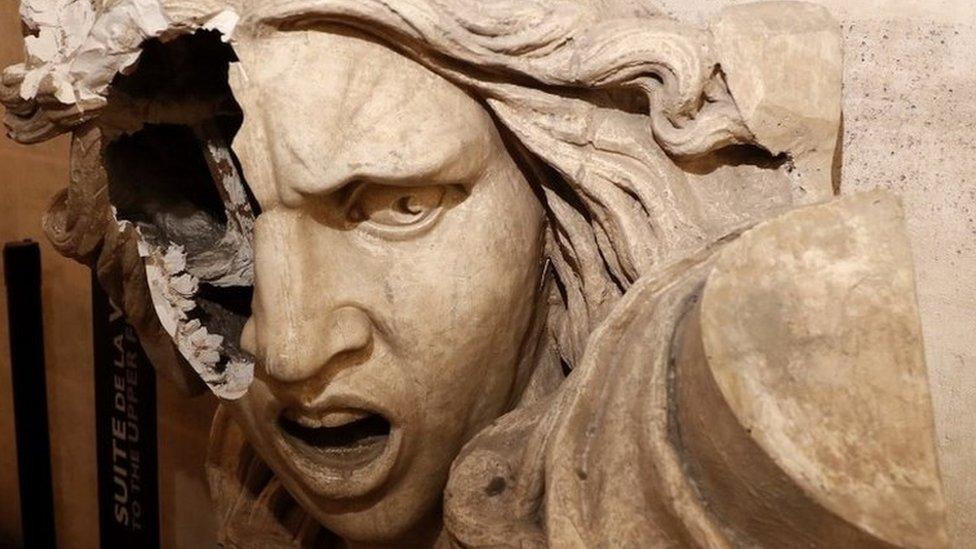
A statue of Marianne, a symbol in France, was vandalised inside the Arc de Triomphe
French President Emmanuel Macron has held an urgent security meeting following a day of riots by thousands of anti-government protesters.
Ministers said that while no options had been ruled out, imposing a state of emergency had not been discussed during the talks - despite earlier reports.
Protests over fuel tax have grown into general anger at higher living costs.
Three people have been killed in the protests since demonstrations started more than two weeks ago, police said.
Justice Minister Nicole Belloubet has promised to bring the full force of the law to bear on people who are found to have resorted to violence.
Before the security meeting on Sunday, Mr Macron inspected some of the damage caused in the disturbances, which had centred on Paris.
More than 100 people were injured in the city, including 23 members of the security forces, and nearly 400 people were arrested, police said.
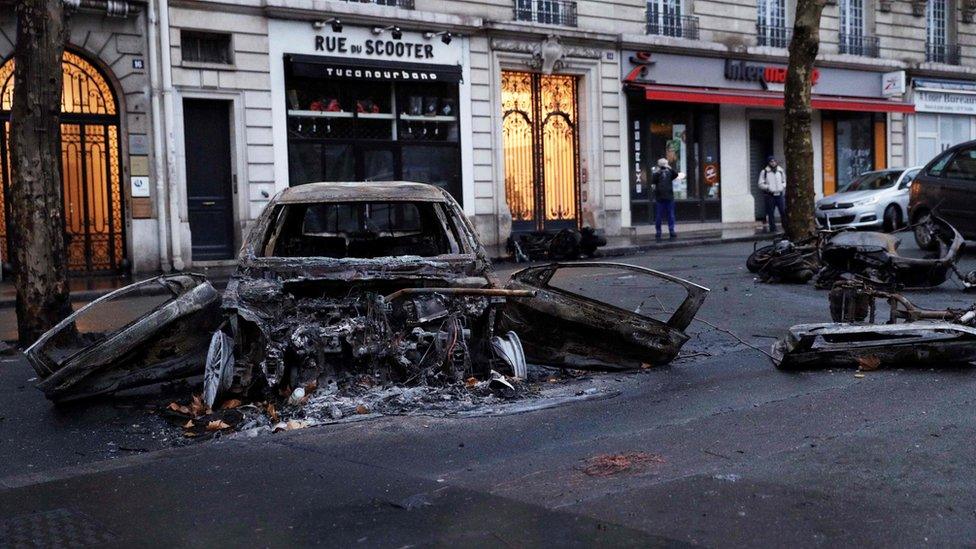
Vehicles in the streets of Paris were torched and some 400 arrests were made
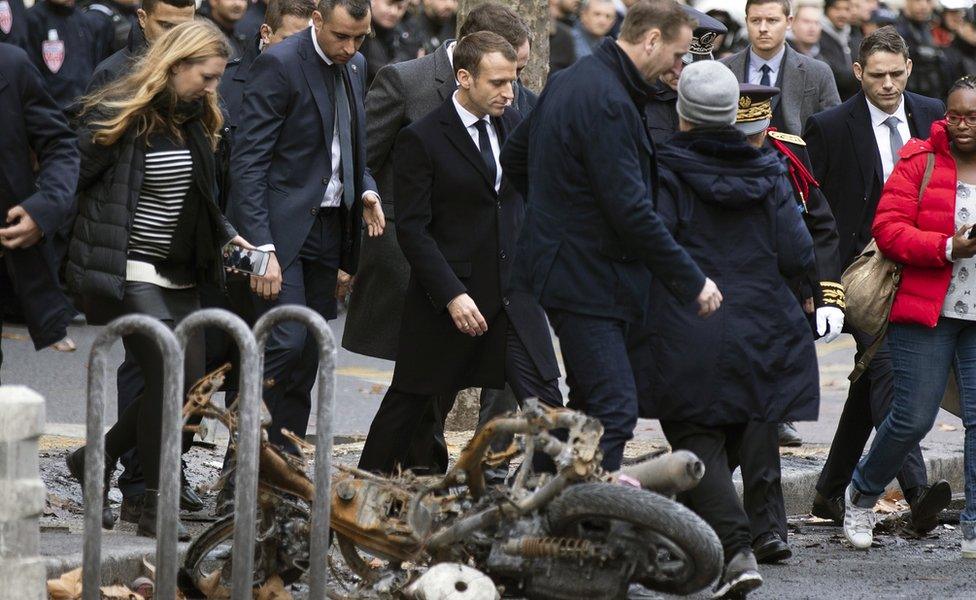
Mr Macron assesses damage caused during the "gilets jaunes" protests near the Champs-Elysées
Mr Macron visited the Champs-Elysées and the Arc de Triomphe, which was scaled by demonstrators on Saturday.
He later chaired an urgent meeting at the presidential palace, involving the interior minister and top security service officials.
France's interior ministry says about 136,000 people took part in the protests nationwide, showing widespread support for the movement known as the "gilets jaunes" (yellow vests).
Dozens of people were injured in Saturday's clashes
Government spokesman Benjamin Griveaux earlier told Europe 1 radio that a state-of-emergency declaration was a possible option. "We have to think about the measures that can be taken so that these incidents don't happen again," he said.
Who are the protesters?
The "gilets jaunes" protesters, so-called because they have taken to the streets wearing the high-visibility yellow clothing that is required to be carried in every vehicle by French law, are complaining at a sharp increase in diesel taxes.
Mr Macron says his motivation for the increase is environmental, but protesters call him out of touch - particularly with non-city dwellers who rely on their cars.
France fuel protests: Who are the people in the yellow vests?
The protest movement has no identifiable leadership and has gained momentum via social media, encompassing a whole range of participants from the anarchist far left to the nationalist far right, and plenty of moderates in between.
Nearly 300,000 people took part in the first country-wide demonstration, on 17 November.

Can Macron heal the rift?
By Hugh Schofield, Paris correspondent
Coming straight from the airport, the president was greeted with cheers but also boos as he looked at the wreckage of burnt-out cars and smashed windows on the Avenue Kléber.
At the Arc de Triomphe, he saw the graffiti targeting him and his government sprayed on the outside, and inside the devastation in the ticketing and reception areas, which had been ransacked by rioters.
The president and his ministers must now decide what action to take in response to a turn of events that in its drama and violence has shocked the country.
He may be hoping that the wanton destruction in the capital marks a turning point, and that many ordinary "yellow vests" will now feel they have had enough.
If so, that might be a rash calculation. The bigger point is their grievances over rising taxes and falling standards of living, and they still have plenty of support.

What happened on Saturday?
The "yellow vest" protesters rallied for a third weekend on Saturday, taking to the streets across the country, including in Narbonne, Nantes and Marseille.
One driver died in an accident at a protesters' blockade in Arles, after a car collided with a heavy goods vehicle, a gendarmerie official told Reuters news agency.
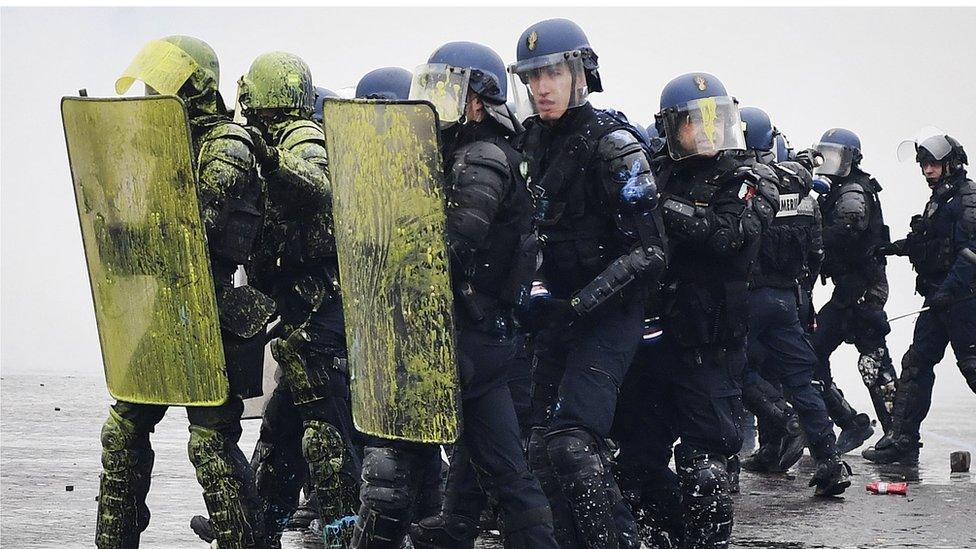
Riot police were splattered with yellow paint
On the Champs-Elysées in central Paris, police fired tear gas, stun grenades and water cannon, while masked protesters hurled projectiles and set buildings on fire.
Nearly 190 fires were put out and six buildings were set ablaze, the interior ministry said.
Department stores and metro stations were closed as a result of the violence.
What has President Macron said?
"I will never accept violence," Mr Macron told a news conference in Buenos Aires on Saturday.
"No cause justifies that authorities are attacked, that businesses are plundered, that passers-by or journalists are threatened or that the Arc du Triomphe is defiled," he said.
He has long maintained that his fuel policies are needed to combat global warming and has accused his political opponents of hijacking the movement in order to block his reform programme.
Earlier this week, Mr Macron tried to strike a conciliatory tone, saying he was open to ideas about how the fuel tax could be applied.
What has angered drivers?
The price of diesel, the most commonly used fuel in French cars, has risen by around 23% over the past 12 months to an average of €1.51 (£1.32; $1.71) per litre, its highest point since the early 2000s.
World oil prices did rise before falling back again but the Macron government raised its hydrocarbon tax this year by 7.6 cents per litre on diesel and 3.9 cents on petrol, as part of a campaign for cleaner cars and fuel.
The decision to impose a further increase of 6.5 cents on diesel and 2.9 cents on petrol on 1 January 2019 was seen as the final straw.

The clean-up is under way. The graffiti here says: "The yellow vests will triumph"
- Published1 December 2018
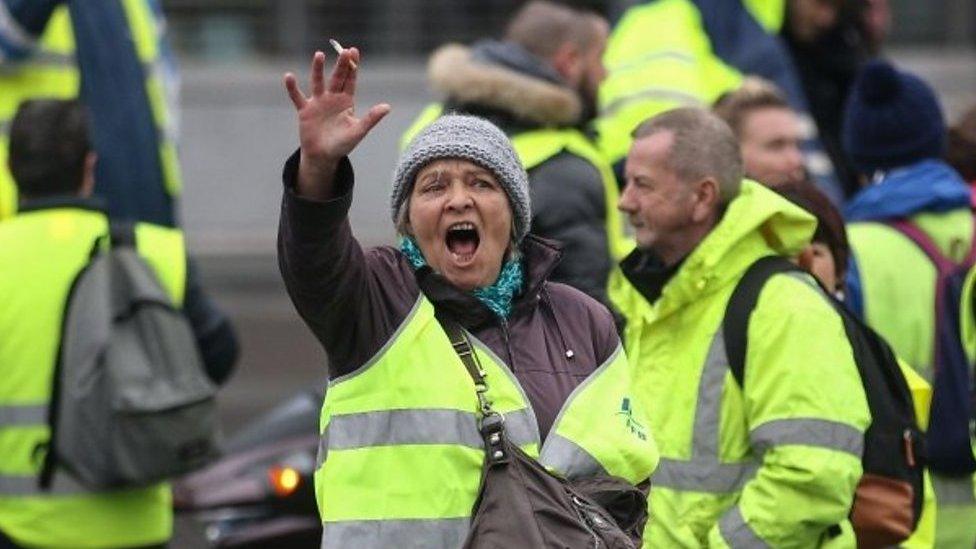
- Published24 November 2018
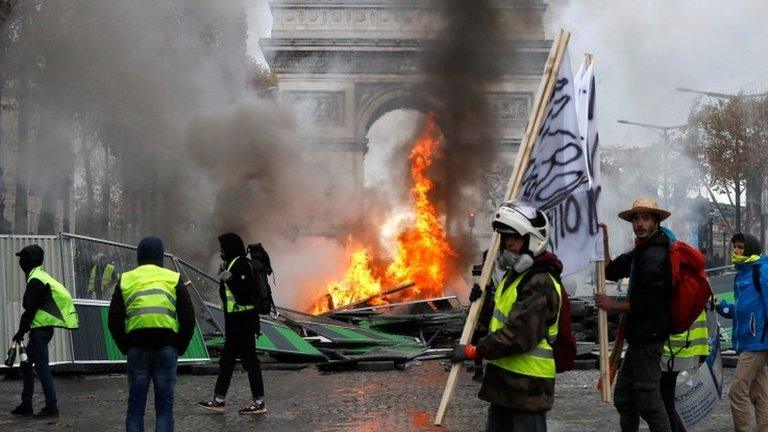
- Published21 November 2018

- Published18 September 2018
